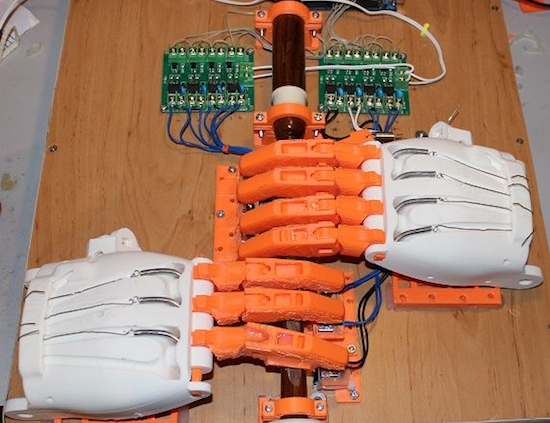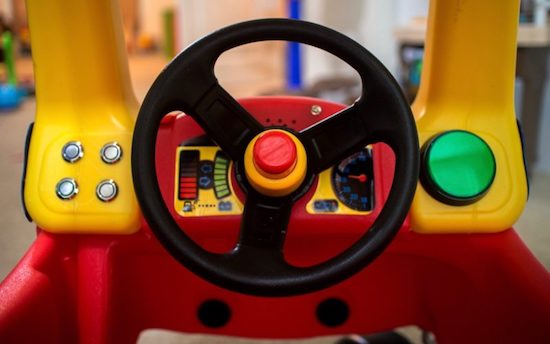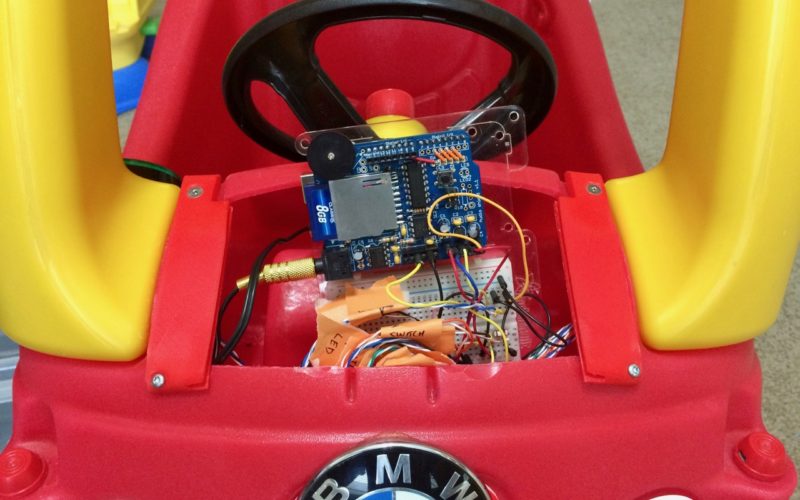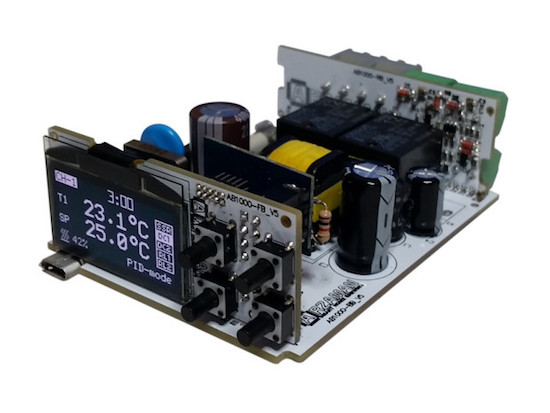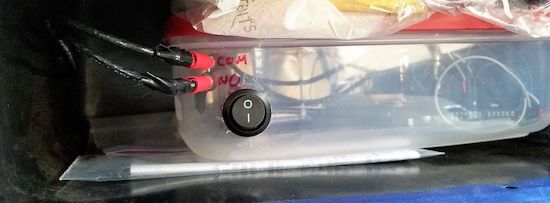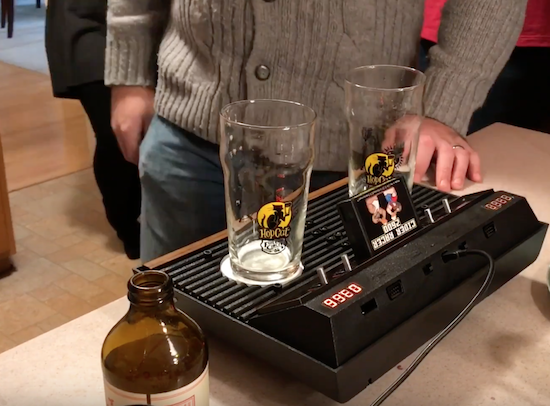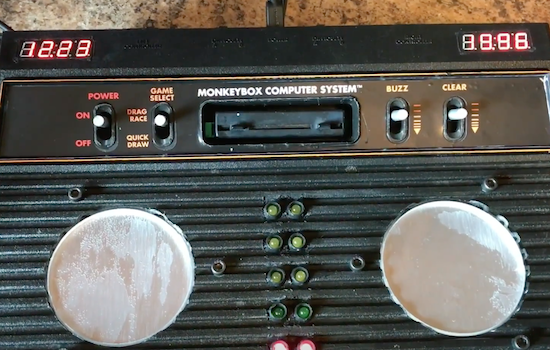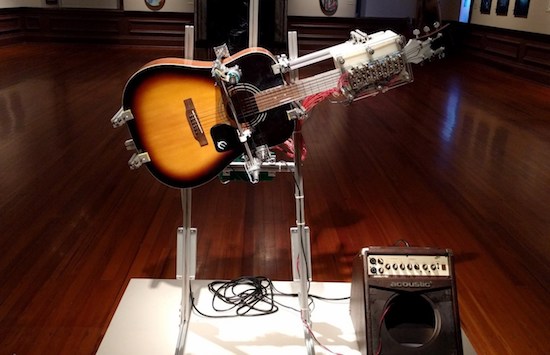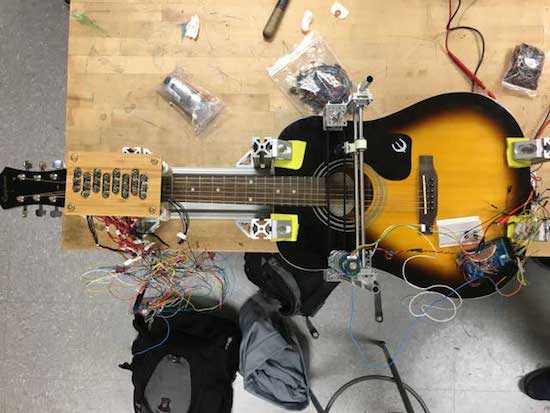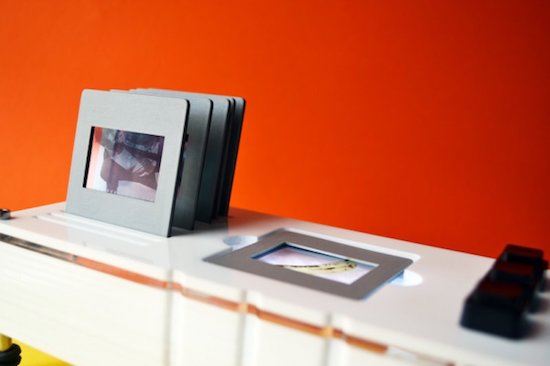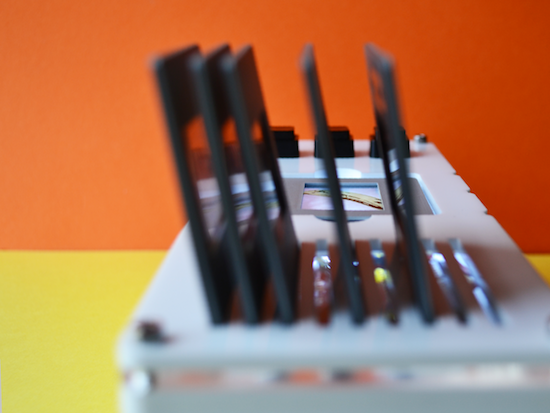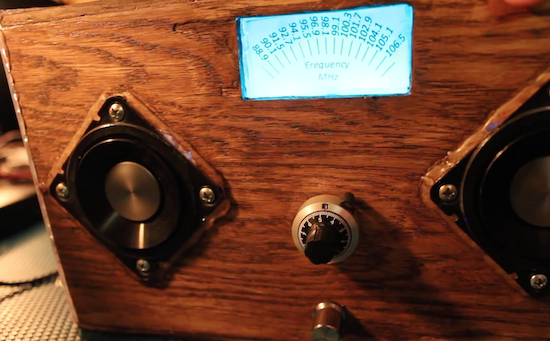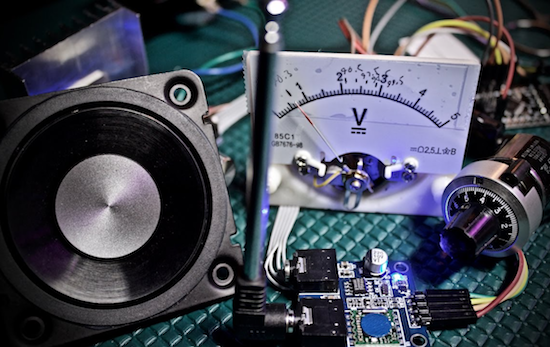Scare away unwanted guests with an eye-moving portrait

There are certainly many ways to generate an old-looking portrait with moving eyes, but this method from Sonic Robots is simple and seems quite effective. The basic formula is to buy a Victorian-like frame, get a picture of a loved/hated/random person (preferably tweaked to resemble an antique oil painting), then put a strip of paper with eyes printed on it behind the person’s eye sockets.
This eyeball strip is pulled by a servo via a fishing line, and importantly, a rubber band keeps tension on it from the other side. This allows it to quickly snap back into place, creating an effect where the eyes randomly move then stay in place for a while, hopefully causing someone to question his or her sanity.
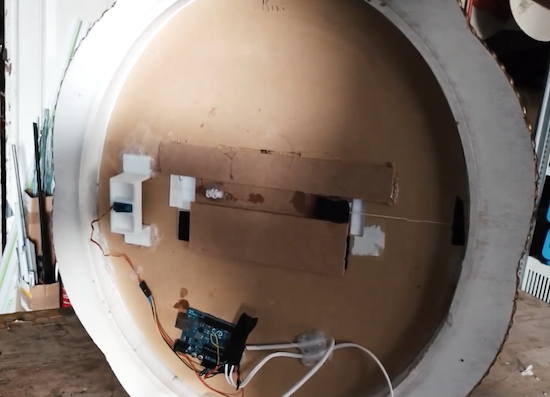
Since everything is Arduino Uno-based, this could be expanded to include sensors for eye control, or even lighting effects as desired.
You can find more details on the project on SonicRobots.com and its code on GitHub.


